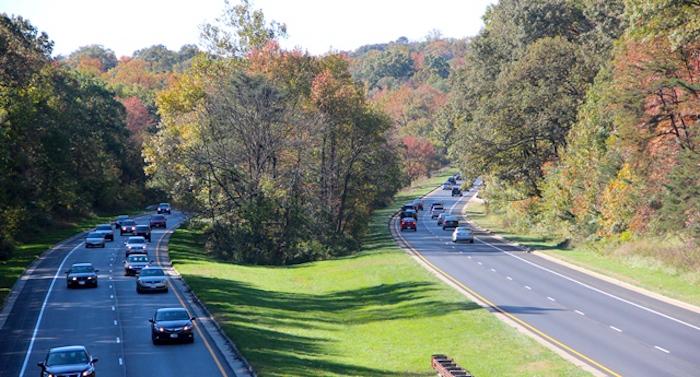
Tree and vegetation clearing is being done along the Baltimore-Washington Parkway to improve sight lines and, hopefully, safety/NPS
The National Park Service is removing hazardous trees and invasive plants to widen the clear zone along the Baltimore-Washington Parkway. A wider clear zone will improve road and environmental conditions and increase visibility and safety for drivers.
From March 19 to April 14, drivers should expect to see crews removing immature, invasive, or unhealthy, trees along the southbound lanes of the parkway from Powder Mill Road to U.S. Route 50.
The parkway, intended as a scenic and recreational gateway connecting Baltimore and Washington, has become one of the most heavily used roadways in the D.C.-Metro area. Like other major roadways, the parkway includes a clear zone, unobstructed land along the travel lanes, which allows drivers to stop safely or regain control of the vehicle. Currently, vegetation is encroaching on the parkway’s clear zone, leaving less area for drivers to pull over in an emergency.
“The major reason to remove vegetation and unhealthy trees is driver safety,” said Matthew Carroll, superintendent of the Baltimore-Washington Parkway. “An added benefit is that removing non-native invasive plants such as white mulberry improves the environmental condition of national parkland.”
This is the first of many steps to return the parkway to its original design, to provide a transportation corridor that blends natural topography, cultural landscapes and scenic forest.
Studies have documented traffic safety issues on the parkway, and removing vegetation and other obstructions from the roadway was recommended in the Baltimore-Washington Parkway Traffic Safety Plan.

 Support Essential Coverage of Essential Places
Support Essential Coverage of Essential Places






